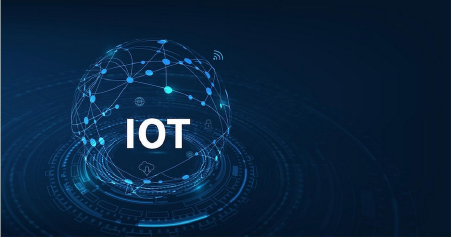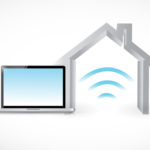 The communication technologies used by IoT devices to communicate data with each other are called IoT networks. Some the examples of IoT networks are cellular networks like LTE-M and NB-IoT, WiFi, Bluetooth Low Energy, Sigfox, LoraWAN, Zigbee, RFID, and Ethernet. IoT devices are usually connected via wireless communication technologies. In some rare cases, you may find IoT devices connected via Ethernet. While IoT protocols like MQTT, CoAP, AMQP, etc. operate at the application layer of the internet, these communication technologies apply to the network layer of internet architecture. IoT is the backbone of the fourth industrial revolution. Industry 4.0 is nothing else but the Industrial Internet of Things (IIoT).
The communication technologies used by IoT devices to communicate data with each other are called IoT networks. Some the examples of IoT networks are cellular networks like LTE-M and NB-IoT, WiFi, Bluetooth Low Energy, Sigfox, LoraWAN, Zigbee, RFID, and Ethernet. IoT devices are usually connected via wireless communication technologies. In some rare cases, you may find IoT devices connected via Ethernet. While IoT protocols like MQTT, CoAP, AMQP, etc. operate at the application layer of the internet, these communication technologies apply to the network layer of internet architecture. IoT is the backbone of the fourth industrial revolution. Industry 4.0 is nothing else but the Industrial Internet of Things (IIoT).
While designing an IoT application, choosing a network is the first thing that needs to be decided. The selection of an IoT network normally depends upon the use case. IoT networks can be classified into four broad classes as follow.
- Cellular networks like LTE-M, NB-IoT, etc.
- LAN/PAN like Bluetooth, WiFi, etc.
- LPWAN like LoRaWAN, Sigfox, etc.
- Mesh protocols like RFID, ZigBee, Z-wave, etc.
The classification of IoT networks is useful in shortlisting them for a particular application. The selection of a specific IoT network may depend upon the required coverage area, cost, device environment, density of IoT devices, power consumption, nature of machine-to-machine communication, required network bandwidth, security, etc. In this article, we will discuss the broad categories of IoT networks along with some popular networks.
Cellular networks (3G, 4G, 5G, next-gen 5G)Cellular networks like 3G, 4G, and 5G are already prevailing in the consumer mobile market. Cellular networks have the largest coverage compared to any other wireless technology. However, these networks carry a high operational cost and have high power consumption. Despite large coverage and wide bandwidth, cellular networks are not often suitable for IoT devices only due to their high cost and large power footprint. For battery-powered IoT devices, cellular networks do get a clear no. Still, cellular networks are suitable for some specific use cases to which no other communication technology may fit.
For example, autonomous cars, connected health infrastructure, real-time video surveillance, fleet management in transportation, and time-sensitive industrial automation are not possible without cellular networks. These applications not just require frequent data communication, but the volume of data involved is also too high. Again the IoT devices communicating in these applications require very distant deployment. Cellular networks are ubiquitous and offer wide bandwidth that makes them viable for such use-cases despite the cost and power downside. Most of these applications require streaming data with a high payload per day. As cellular networks are capable of providing a data rate greater than 380kbps with a bandwidth of 5~20MHz (3G/4G), neither high payload nor streaming is a problem. A real push to most of these applications will be next-generation 5G cellular.
LPWAN
Cellular networks are a misfit for battery-powered applications as well as machine-to-machine communication. A viable solution for connecting IoT devices deployed remotely is the Low Power Wireless Area Network (LPWAN). There are both licensed and non-licensed LPWANs. The licensed one includes NB-IoT and LTE-M. The non-licensed include Sigfox and LoRaWAN. While LPWANs allow battery-powered IoT devices to communicate over long distances, only a small amount of data can be communicated with these technologies due to lower bandwidth. LPWAN has several advantages over cellular networks. Like, these networks are cheap and can be integrated into small circuits. Unlike cellular networks, these networks can operate on battery for several years.
Let us discuss some of the common LPWANs.
NB-IoT
NB-IoT is a licensed LPWAN that lets communicate unlimited payload per day at a bandwidth of 180MHz. This narrowband IoT protocol is low-cost with medium power consumption. The NB-IoT devices do not require any gateway and can communicate data directly to the server. With a data rate of 200kbps and unlimited payload per day, NB-IoT allows a massive number of connections. Though the protocol does not support mobility to a greater extent, it is known for good performance both outdoors and indoors.
LTE-M
LTE-M is a licensed LPWAN that is based on using LTE bases for communication between IoT devices. Also known as Cat-M1, LTE-M provides a higher bandwidth allowing massive connection density and even applications like VoIP to operate. Compared to NB-IoT, LTE-M devices have higher power consumption and require a gateway to communicate with the server. The devices are also more expensive compared to NB-IoT devices.
LoRaWAN
Maintained by LoRa-Alliance, LoRaWAN offers a coverage area of 15 km. This non-licensed LPWAN has a bandwidth of 125~500 KHz and a data rate of up to 27 kbps. It operates on a free ISM frequency band. Due to lower power consumption, LoRa is most suitable for battery-powered industrial IoT devices. LoRa devices can run on a battery for up to 10 years. Being non-licensed, LoRa networks do have a limitation. They can only use 1 percent of their bandwidth. Normally, LoRa allows up to 140 messages of 12 bytes to be transmitted uplink in a day. There is more flexibility regarding downlinks. The data is always transmitted in 12-byte packets. LoRa is most suitable for battery-powered sensor networks where the controller spends most of the time in sleep mode and transmits sensor data intermittently. The data needs to be communicated to a gateway before transmitting to the server.
Sigfox
Maintained by Sigfox, a global communication service provider, Sigfox is a non-licensed LPWAN. With a bandwidth of 200 kHz, it is an Ultra Narrow Band (UNB) technology. It is based on the same ISM frequency band that LoRaWAN is. It allows coverage of 30~50 km. Sigfox allows up to 140 messages of 12 bytes to be transmitted uplink in a day. The downlink is limited to 4 messages per day. Despite a lower data rate and narrow bandwidth, Sigfox has the advantage of global reach.
LAN/PAN
The coverage area of Local Area Networks (LAN) and Personal Area Networks (PAN) is limited to the local environment like within a building or small premises. Bluetooth/BLE and WiFi are the two most prominent wireless LAN technologies. Despite small coverage, these technologies have high bandwidth and great data transfer rate to offer.
Let us discuss Bluetooth and WLAN.
Bluetooth/Bluetooth Low Energy
Bluetooth and Bluetooth Low Energy are short-range communication technologies. BLE is designed for consumer IoT applications. It can be used for both point-to-point and point-to-multipoint data communication. It is mainly used by smartwatches and smart home devices to communicate with mobile phones or smart hubs. The new Bluetooth Mesh specification has increased the scalability of BLE networks. With low energy and low power consumption, Bluetooth beacon networks can be used in retail stores for consumer services like in-store navigation, personalization, and content delivery.
WiFi
WiFi networks provide high bandwidth and excellent data transfer rates but at the cost of high power consumption and limited coverage. Due to limited coverage, high power consumption, and lack of scalability, WiFi networks are never used in industrial IoT applications. Because WiFi networks are mostly available as broadband services to homes, it is useful for smart home and home security applications. The newest WiFi generation – WiFi 6.0 is applicable to retail applications and open WiFi infrastructures catering to digital mobile services.
Mesh protocols
Mesh protocols are best suited for low-range distributed networks like sensor networks and low-range industrial IoT. The data is communicated to a gateway or a central hub. These communication technologies are a robust solutions for in-building applications.
Let us discuss some of the mesh protocols/technologies.
Zigbee
Zigbee is a popular non-licensed mesh protocol widely used in distributed IoT applications. This is a short-range protocol covering a distance of fewer than 100 meters. In industrial applications, it is directly compared with LPWANs. Compared to LPWAN, Zigbee provides a higher data transfer rate and greater power efficiency. If short-range is not an issue, Zigbee devices can run for years without battery replacement. As Zigbee devices operate in a mesh topology, the network remains operational by routing communication through other devices even if a device within the network is shut down or get malfunctions. Along with WiFi, Zigbee is also widely used for home automation.
Z-wave
Z-wave is also a mesh protocol like Zigbee. It has higher coverage and is designed to suit applications like smart home and home surveillance. Z-wave uses low-frequency radio waves that are not interfered by WiFi signals. Compared to Zigbee, Z-wave is a proprietary technology and requires a license for usage. One problem with Z-wave devices is interoperability. Z-wave operates in different frequency bands in Europe and USA.
RFID
RFID is mainly used for asset tracking. The RFID tags communicate minimal data within a short range, usually for identification. For reading RFID tags, line-of-sight is not required, like in the case of barcodes. This technology is widely used in the retail and logistics sector. Some popular applications of RFID include supply chain management, asset tracking, E-passport, automated checkouts, human implants, medical monitoring, security access control, and payment systems. In India, FASTag, a passive RFID technology, is used for automating toll payments.
Conclusion
There are several different IoT networks. These communication technologies can be broadly classified into cellular networks, LPWAN, LAN/PAN, and Mesh technologies. The classification is mainly based on coverage and bandwidth. Most of IoT networks are wireless communication technologies. Each class of IoT network has its own pros and cons. After short-listing a suitable category, IoT developers can make a selection of specific networks on the basis of cost, device environment, security, device density, data bandwidth, data transfer rate, data frequency, Quality-of-Service, network architecture, and management.
You may also like:
Filed Under: IoT tutorials, Tech Articles, Tutorials






Questions related to this article?
👉Ask and discuss on EDAboard.com and Electro-Tech-Online.com forums.
Tell Us What You Think!!
You must be logged in to post a comment.